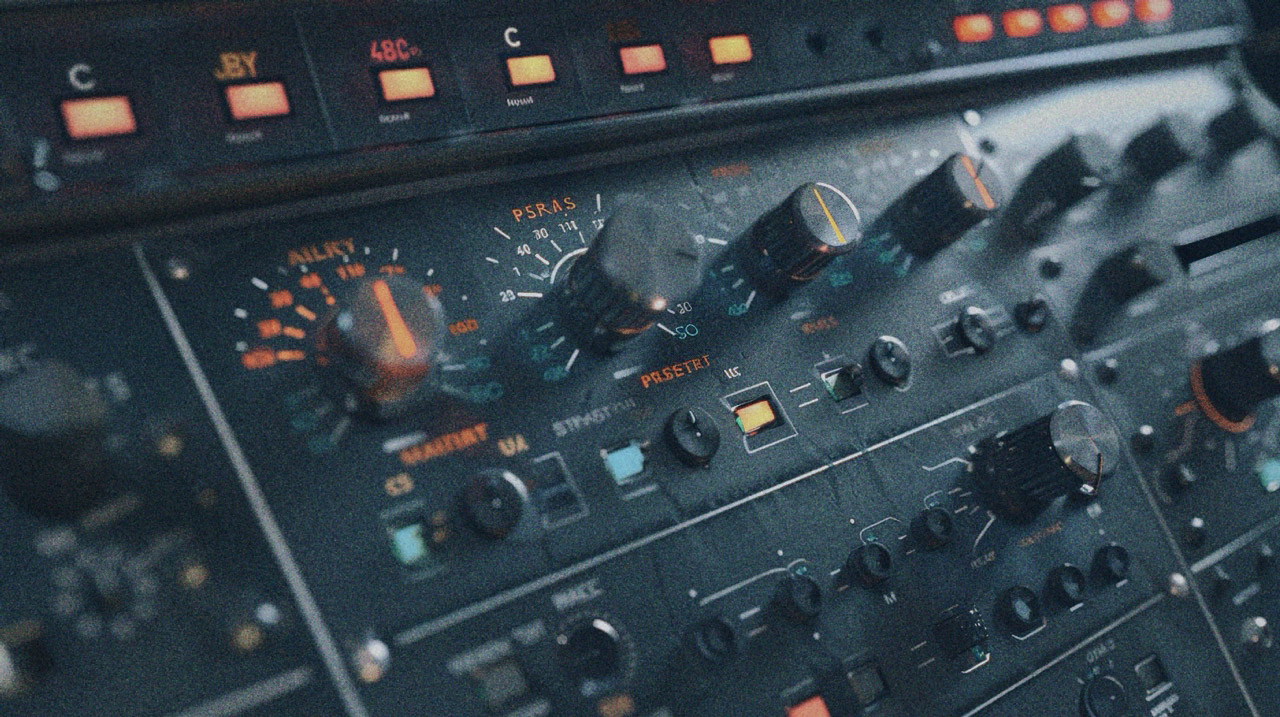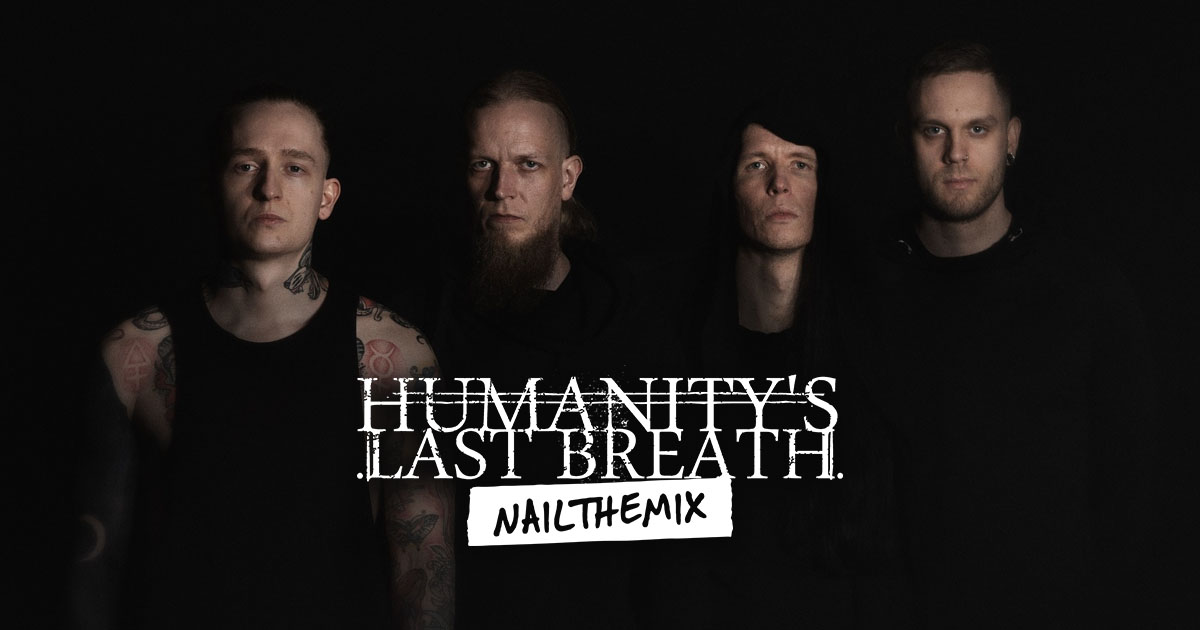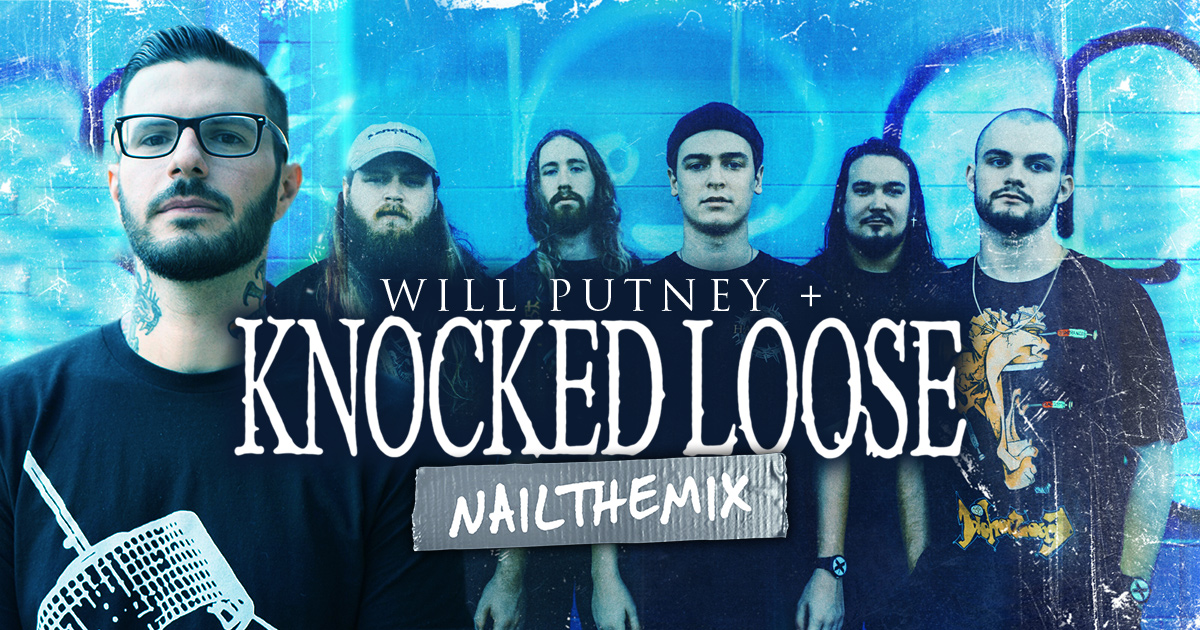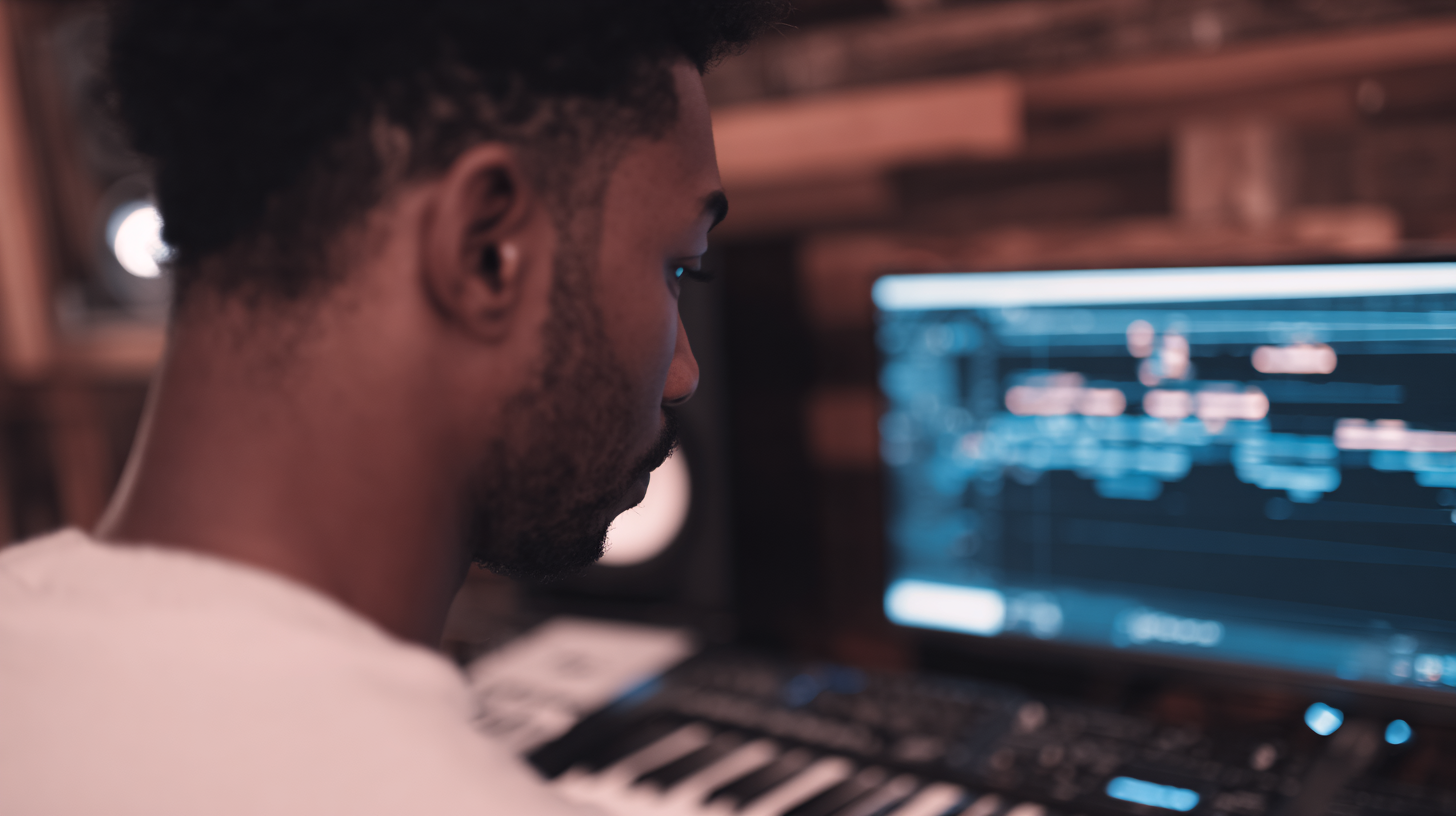
What is Saturation & How Do Metal Mixers Use It?
Nail The Mix Staff
Ever listen to a killer metal track and wonder how everything sounds so huge, aggressive, and somehow… glued together? You know, when the drums punch you in the chest, the bass growls with authority, and the guitars just scream power? A big part of that magic, often working behind the scenes, is saturation.
If you're already producing music, you've probably encountered the term. But what is saturation, really? And more importantly, how can you wield it to make your own metal productions sound absolutely monstrous? Forget dry, sterile mixes; let's dive into how this awesome effect can inject life, character, and pure aggression into your tracks.
So, What Is Saturation Anyway? More Than Just Distortion
At its core, saturation is what happens when an audio component (like a tube, transformer, or piece of magnetic tape) is pushed beyond its optimal clean operating level. It starts to add harmonic content – new frequencies related to the original signal – and introduces a gentle form of compression.
Think of it like this: your favorite tube guitar amp, like a Marshall JCM800 or a Peavey 5150/6505. As you crank the gain, it doesn't just get louder; it gets richer, thicker, and starts to sing. That’s saturation (and then distortion as you push it harder!). It’s the sound of analog gear working its mojo.
Key things saturation adds:
- Harmonics: These are the new frequencies generated. Even-order harmonics tend to sound warm and "musical" (think gooey tube warmth), while odd-order harmonics often sound more aggressive and gritty (hello, transistor fuzz!).
- Soft Compression/Limiting: As the signal gets pushed, the peaks get naturally rounded off or "saturated." This tames transients in a pleasing way and can increase perceived loudness. We'll touch on this more, but if you're deep-diving into dynamic control, our guide on the basics of audio compression is a must-read.
- Warmth & Character: It just makes things sound… better. More interesting. More analog.
It's a cousin to distortion and fuzz, but saturation is often more subtle – it’s the secret sauce that can take a good mix to a great mix, especially in the dense and demanding world of metal.
Why Saturation is a Metal Mix Godsend
Alright, so it adds harmonics and compresses a bit. Cool. But why should you, a metal producer, care? Because saturation is practically built for heavy music.
Adding Harmonics: Making Things Cut and Sound Fuller
Metal mixes are crowded battlefields. Guitars, blast beats, screaming vocals – everything is fighting for space. Saturation helps individual elements carve out their own sonic territory by adding harmonics.
- Kick Drums: Want your kick to have that satisfying low-end thump but also a clear click that cuts through the guitars? Saturation can add those upper harmonics for definition. Try something like Soundtoys Decapitator in 'A' or 'E' mode, or even the built-in saturation on a drum sampler like Toontrack Superior Drummer 3 or a Joey Sturgis Tones drum plugin.
- Bass Guitar: A common struggle is getting bass to translate on smaller speakers. Saturation adds upper harmonics that help the bassline be heard even when the fundamental low frequencies are lost. This is where plugins like the Tech 21 SansAmp PSA-1 (or its emulations) or Neural DSP’s Parallax shine.
- Vocals: Need that growl to have more bite or a clean vocal to have more presence? A touch of saturation can make vocals sit proudly in front of the mix.
Glue and Cohesion: Making Your Mix Gel
Ever put saturation across your drum bus or even your whole mix bus? It’s like magic. That subtle harmonic richness and gentle compression can help "glue" disparate elements together, making them sound like they belong in the same sonic space.
Using a plugin like Slate Digital Virtual Tape Machines (VTM) on your mix bus, or driving a console emulation like the Waves NLS or Plugin Alliance SSL 4000 E/G series channels subtly can work wonders.
Perceived Loudness Without Clipping
This is a big one for metal. Saturation can make your tracks sound louder and more aggressive without actually increasing the peak levels as much as straightforward gain would. Those added harmonics and soft peak reduction trick our ears into perceiving more energy. It’s a way to get intensity without slamming into your digital clippers (though sometimes, controlled clipping is its own effect!).
Taming Transients and Adding Sustain
The natural compression that comes with saturation can beautifully tame harsh transients on drums. Think about how a real tape machine softens the spiky attack of a snare drum. This can make drums feel punchier and less pokey. On guitars or bass, it can add a bit of sustain, making notes ring out longer and feel more powerful.
If you're finding your snare is too "pointy," try a tape saturation plugin on it. You might need less aggressive EQ moves to tame harshness afterwards.
Killer Ways to Use Saturation in Your Metal Mixes
Let's get practical. Here’s how you can start slathering this goodness all over your metal tracks:
Drums: Punch, Smack, and Character
- Kick: We mentioned it before, but seriously, try it. FabFilter Saturn 2 is incredibly versatile here – you can target specific frequency bands for saturation. Want more beater attack? Saturate the highs. More body? Focus on the low-mids. Start with a "Warm Tape" or "Gentle Tube" preset and tweak the drive.
- Snare: For that CRACK that cuts through a wall of Marshalls, saturation is your friend. Parallel saturation works great here: duplicate your snare track, obliterate one with something like Kilohearts Faturator or Decapitator on the 'P' (Punish) setting, then blend it back in subtly under the main snare.
- Toms: Give your toms that epic, resonant BOOM. Tube or tape saturation can add weight and sustain. Try the Softube Saturation Knob – it’s literally one knob, can't go wrong. Turn it up until it sounds good, then maybe back it off a touch.
- Drum Bus: This is where the "glue" happens. A classic move is to use something like the Cytomic "The Glue" compressor (which has a great character when driven) or a dedicated tape emulation like Waves Kramer Master Tape. Don’t go nuts; a little goes a long way to make the whole kit sound cohesive and punchy. Aim for 1-3dB of gain reduction on the tape sim’s meters.
Bass: Grind, Presence, and Definition
Bass guitar in metal needs to be a foundational force and cut through.
- DI Bass + Saturation: Take a clean DI signal and mangle it. Plugins like the Neural DSP Darkglass Ultra or Kuassa Cerberus Bass Amp have incredible distortion and saturation stages built-in. This is key for modern metal bass.
- Parallel Bass Saturation: Similar to the snare trick. Keep your clean, solid low-end DI, and blend in a heavily saturated/distorted track focusing on the mids and highs for that grindy edge.
- Transformer Saturation for Weight: For a rounder, warmer bass, transformer saturation (like from a Kush Audio Omega TWK or Waves NLS "Nevo" console emulation) on the low-mids can add serious heft without mud.
Guitars: More Aggression, Less Fizz (Sometimes!)
Guitars in metal are already pretty distorted, right? Yes, but targeted saturation can still play a role.
- Post-Amp Sim Sweetening: Sometimes an amp sim can sound a bit sterile. Running it through a subtle tape saturation plugin (UAD Studer A800 or Softube Tape) can smooth out any digital harshness and add a bit of analog vibe. Try 15 IPS for more low-end bump, 30 IPS for a smoother top.
- Guitar Bus Character: Similar to the drum bus, a touch of saturation on your main rhythm guitar bus can help glue quad-tracked parts together and add a final layer of aggression.
- Taming Fizz with Tape: Ironically, while saturation adds harmonics, tape saturation is known for its gentle high-frequency roll-off and smoothing. If your high-gain tones have that nasty "fizz," tape saturation after the amp can sometimes tame it more musically than just EQing. For more on surgical EQ for fizz, check our guide on using equalization in metal.
Vocals: Presence, Grit, and Intimacy
Vocals need to sit on top and convey emotion, whether it’s a guttural roar or a soaring clean.
- Screams/Growls: Add more bite and intensity. Decapitator is a go-to for many. The 'T' (Transistor) or 'E' (EMI console) modes can really make harsh vocals shred.
- Clean Vocals: Subtle tube saturation can add warmth and presence, helping them feel bigger without just turning up the fader. Try a plugin like the Black Box Analog Design HG-2MS or even a preamp emulation like a Arturia Pre TridA driven gently.
- Parallel Vocal Saturation: You guessed it – blend in a heavily saturated vocal track for grit and excitement while retaining the clarity of the main vocal. This is great for making vocals cut without becoming harsh.
Mix Bus: The Final Polish and Vibe
This is where you need to be extra careful. Overdoing saturation on the mix bus can ruin your mix. But a very subtle touch (like, barely perceptible) can add that final "finished record" sheen and cohesion.
- Tape Emulation: Plugins like Slate VTM or UAD Ampex ATR-102 are popular choices. Just kissing the needles.
- Console/Transformer Saturation: Some mastering EQs or compressors also impart subtle harmonic character. The Kush Audio Clariphonic DSP mkII isn’t strictly a saturator, but its parallel EQ network definitely adds pleasing harmonics.
Types of Saturation & Tools of the Trade
Different sources of saturation have different flavors:
Tape Saturation
- Characteristics: Warmth, natural compression (especially to transients), high-frequency smoothing/attenuation (especially at lower tape speeds like 15 IPS), and a characteristic low-end "head bump."
- Great For: Drum bus, mix bus, smoothing harsh guitars or cymbals, adding vintage vibe.
- Plugins: Slate Digital VTM, UAD Studer A800 / Ampex ATR-102, Waves J37 / Kramer Master Tape, Softube Tape, Chowdhury CHOW Tape Model (free and awesome!).
- Pro Tip: Experiment with tape speed (15 IPS often gives more low-end bump and saturation, 30 IPS is cleaner with better high-frequency response). Don't be afraid to disable wow/flutter if you want the tone without the pitchiness.
Tube Saturation
- Characteristics: Often rich in even-order harmonics (creating warmth and fullness), can range from subtle warmth to aggressive overdrive. Responds very dynamically to input level.
- Great For: Vocals, bass, individual drums, guitar solos, warming up sterile digital sounds.
- Plugins: Soundtoys Decapitator (multiple modes, including tube), FabFilter Saturn 2, Kazrog Thermionik (amp components), Waves Scheps 73 (Neve preamp emulation), Plugin Alliance Black Box Analog Design HG-2MS.
Transformer Saturation
- Characteristics: Can add low-end weight ("iron"), mid-range character, and a subtle sheen. Often associated with classic Neve or API consoles.
- Great For: Bass, kick drum, mix bus, adding "glue" and that "console sound."
- Plugins: Many console emulation plugins (Waves NLS, Plugin Alliance Lindell 80 Series, Brainworx bx_console N), Kush Audio Omega Transformer Series (API, Neve, etc.), Softube Harmonics.

100+ Insanely Detailed Mixing Tutorials
We leave absolutely nothing out, showing you every single step
Transistor Saturation
- Characteristics: Often brighter, more aggressive, with more odd-order harmonics. Think fuzz pedals or overdriven solid-state preamps.
- Great For: Aggressive bass tones, creative vocal effects, adding bite to drums.
- Plugins: Decapitator ('T' mode), various fuzz pedal emulations, some modes in Izotope Trash 2.
Pro Tips for Nailing Saturation
- Less is More (Usually): Especially when applying saturation to multiple tracks or buses. The cumulative effect can be significant. It's easy to overdo it and end up with a muddy, distorted mess.
- Listen in Context: What sounds great in solo might be too much (or too little) in the full mix. Always A/B with the saturation bypassed.
- Wet/Dry Knobs are Your Friend: Many saturation plugins have a mix/blend knob. This allows for parallel processing, giving you fine control over how much saturated signal is blended with the dry signal. Use it!
- Gain Staging Matters: How hard you hit the input of a saturation plugin dramatically affects its response. A plugin might sound subtle with a low input signal and like a raging fuzzbox if you slam it. Pay attention to your levels going into the saturator.
- Don't Be Afraid to Experiment: There are no hard rules. Try different types of saturation on different sources. Push things to their limits to hear what they do, then dial it back. Sometimes the "wrong" choice is the perfect creative touch.
Want to See Saturation Masters at Work?
Learning about saturation is one thing, but seeing how seasoned pros use it to sculpt massive metal tones is a total game-changer. Imagine watching producers who've mixed bands like Periphery, Gojira, or Meshuggah actually dial in these saturation techniques on real songs, explaining every move.
That’s exactly what you get with Nail The Mix. Every month, you get the actual multi-tracks from a huge metal song and watch the original producer mix it from scratch. You'll see them:
- Choosing the right saturation for bone-crushing kick drums.
- Getting bass guitars to grind and sit perfectly with heavy guitars.
- Adding that perfect aggressive edge or warmth to vocals.
- Using bus saturation to glue the whole chaotic mix together.
If you’re ready to go beyond presets and truly understand how to make your metal mixes sound professional and powerful, this is where you see it happen.
Check out Nail The Mix and see how the pros level-up their mixes
Saturation isn't just a technical effect; it's an artistic tool. It adds vibe, character, and power. So get in there, start experimenting with saturation plugins on your tracks, and listen to how it transforms your metal mixes from merely loud to truly BRUTAL. Keep learning, keep tweaking, and make some noise!
Get a new set of multi-tracks every month from a world-class artist, a livestream with the producer who mixed it, 100+ tutorials, our exclusive plugins and more
Get Started for $1




